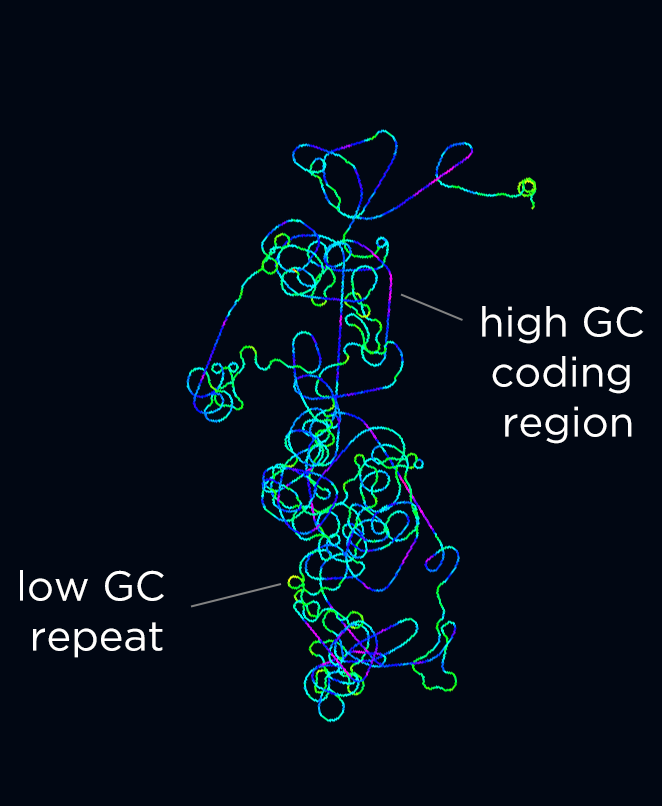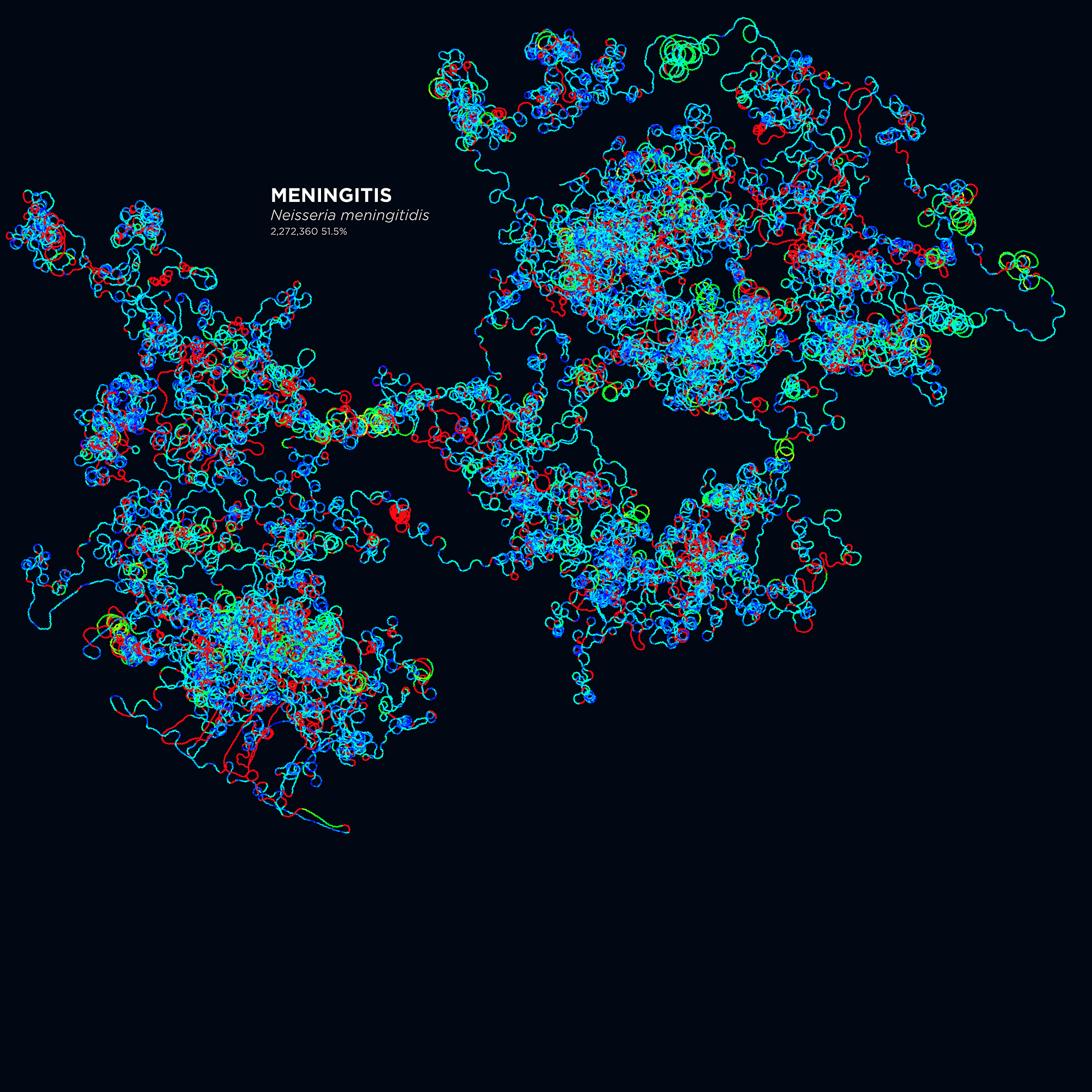Reading the posters
The poster visualizes the genomes of various bacteria and viruses that cause human disease. For viruses, the genomes of several strains are shown when possible.
The x-axis represents the disease burden, the average number of world-wide deaths due to the disease.
The y-axis depicts mortality, the percentage of worldwide cases that result in death.
The genome as a path
Each genome is drawn as a path, which appear as a bundle of thread.
LENGTH The length of the path is proportional to the size of the genome.

COLOR The color of the path reflects the percentage of guanine or cytosine at that position in the genome. This is called the GC content and varies between organisms. For example, the human genome has GC content of 41% while malaria (Plasmodium falciparum) has a very low 19% GC content. Red regions along the path indicate intragenic regions—parts of the genome between adjacent genes.
CURVATURE Path direction is determined by the repeat content at that location. Regions with low repetition are straighter than repetitive regions.
Interpreting genome structure
Bacterial genomes are compact and gene rich. The low proportion of intergenic regions in their genomes can be seen by the small fraction of the genome path colored red.

100kb of human chr2
near HOX cluster

100kb of random sequence
